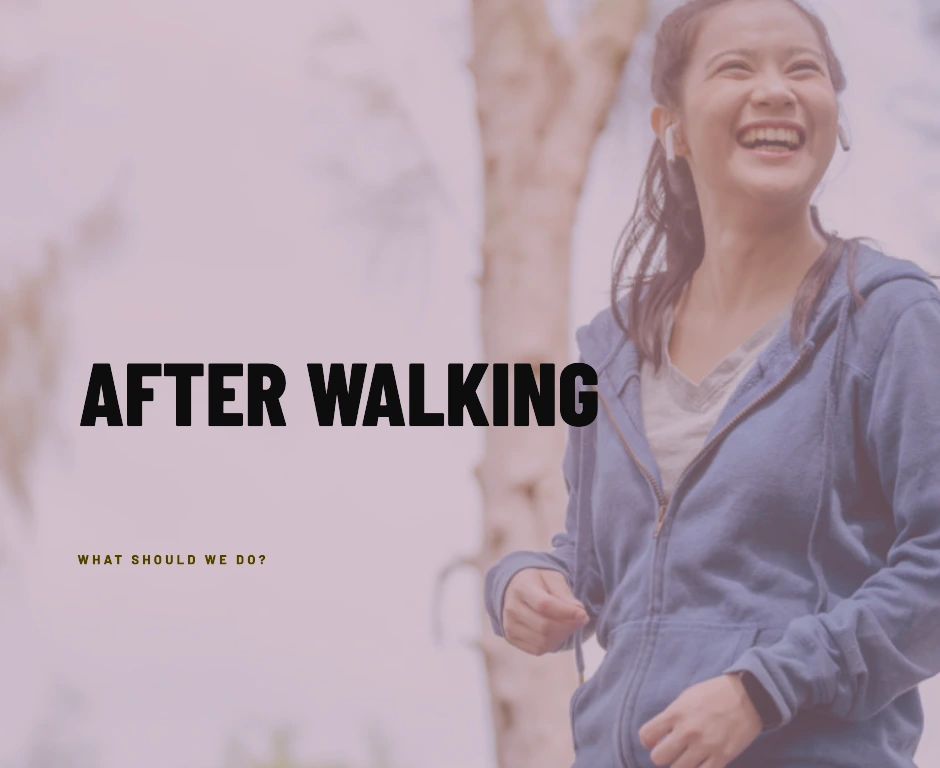Table of Contents
Some links on posts are affiliate links and will earn us a commission from qualifying purchases
Whether you’re a casual hiker or an avid outdoors enthusiast, walking can be a great form of exercise and relaxation. But are you giving your body enough rest afterward? Walking for extended periods can cause tension to build up in the body’s muscles, so it’s important to take breaks that allow us to stretch out our tired limbs properly.
In this article, we’ll show you why relaxing and stretching after a long walk is so important, as well as share some tips on how best to go about it. So prepare yourself for the necessary recovery time – sit down with us and read on!
Benefits of Sitting Down After Walking
After a long walk, nothing is more appealing than taking a seat to relax and unwind. But did you know that sitting down after a nice walk can actually benefit your overall health? While strolling is excellent for light exercise, it also exerts pressure on muscles and joints in the legs and feet. Therefore, taking a short break to rest and recline allows your body to recover, increasing endurance in the long run.
Sitting also has additional benefits, such as improved blood flow in the legs and reduced swelling. If you have been walking for an extended period, you will notice your legs may have become swollen, and this can cause problems when you decide to continue walking. Taking a rest for a few minutes, or even longer if you feel tired, helps reduce swelling as you allow your muscles to repair.
It’s crucial to remember that after a few minutes break, it’s best to get back to walking to maintain your body’s blood flow. By doing some light exercise, you help decrease the risk of your body seizing up after your walk and increase the number of calories you can burn. Plan your next walking session with the knowledge that you deserve some rest from time to time.
Tips for Relaxing After Walking
After a long walk, your body deserves some well-needed love and care to recuperate from the exertions. One of the best ways to unwind is with a warm bath or shower. The heat will help ease any tension in your muscles, leaving you feeling refreshed and rejuvenated. Additionally, incorporating some gentle stretches and yoga poses into your post-walk routine can help loosen and strengthen tight muscles, promote blood circulation, and enhance your overall flexibility.
To take it a notch further, you can use essential oils or bath salts that come with relaxing properties during your bath. This will help calm your mind and deepen your relaxation experience. After your bath, you can blend in some meditation or deep breathing exercise to further relax your mind and bring your body into a state of balance and harmony.
Remember, taking care of your body after a long walk not only helps you feel rejuvenated and refreshed but also ensures that your muscles are properly cared for and ready for the next adventure that awaits you. So sit back, relax, and allow your body to indulge in some self-care!
Take Some Vitamins
Taking vitamins regularly is crucial for anyone aiming to maintain a healthy lifestyle. Ensuring that you get all the necessary vitamins on a daily basis works wonders in supporting your immune system and overall well-being, resulting in increased energy levels and better focus.
One of the most sought-after vitamins is vitamin C, which can be found in abundance in oranges, lemons, and other citrus fruits. Even a minimal change like adding a little fresh lemon juice to your water can have positive effects on your body by boosting your vitamin C intake. So, why not make a small addition to your routine and enjoy a refreshing drink that provides an added health benefit?
Stretching Exercises to Do After Walking
Walking is not only an enjoyable way to get some exercise but also an excellent opportunity to breathe in some fresh air and take a break from our hectic lives. However, it’s essential to take care of our body post-walk too, and stretching is an excellent way to do so. In fact, incorporating stretching exercises into our routine can be highly beneficial, helping us prevent injuries and reduce muscle soreness.
There are various stretching exercises you can include in your post-walk routine, but two stretches that we would like to recommend are a quad stretch and a calf stretch. A quad stretch involves standing upright and pulling your foot towards your buttocks, which helps stretch the muscles in your thighs. On the other hand, a calf stretch involves stepping forward with one foot and pressing your heel down on the ground while keeping your back leg straight, which is a great way to stretch your calves.
By taking a few extra minutes to stretch after your walk, you’ll be doing yourself a favour and setting yourself up for success on your next walk. Not only will you be reducing your risk of injury and muscle soreness, but you’ll also be keeping yourself limber and prepared for the next time you decide to take a stroll. So, why not consider incorporating some stretching exercises into your next post-walk routine? Your body will thank you!
Kickstart your metabolism
Starting a new workout routine can be exhilarating! However, to achieve your health goals, it’s important to remember that working out isn’t enough. Properly fueling your body is an equally essential component. That’s why it’s crucial to ensure that you’re snacking healthily throughout the day, particularly after exercising.
You don’t need to wait until your next primary meal to replenish your energy and kickstart your metabolism. Incorporating healthy snacks into your routine is a great way to replenish burned calories while also ensuring your body is fueled and ready for your next workout. Plus you’ll be improving muscle recovery and bringing your energy levels back on track.
The Impact of Walking on Your Health and Well-Being
Walking is easily accessible and the most natural form of exercise that anyone can do. Walking is not only a great way to stay active, but also has a significant impact on overall health and well-being.
Regular walking is an excellent way of reducing the risk of developing chronic diseases such as heart disease, stroke, and diabetes. The American Heart Association says that walking at a moderate pace for at least 30 minutes every day effectively reduces the risk of these chronic illnesses in the long run.
Apart from improving your overall health, regular walking also helps in weight management, improves bone density, and strengthens your muscles. Walking is also beneficial in that it is low impact, which means it’s an ideal exercise for those who have joint pain or arthritis.
Moreover, recent studies have shown that walking has positive effects on mental health too, as it helps in reducing symptoms of anxiety and depression. So whether you’re taking a leisurely stroll through the park or incorporating walking into your daily commute, it’s clear that putting one foot in front of the other can have a big impact on your physical and mental health.
Conclusion – post-hike activities
Walking is a great way to stay fit and healthy. Even if one doesn’t have a huge amount of time, regular short walks can be beneficial. Setting goals, tracking progress, and rewarding oneself are all ways to remain motivated to continue the habit of walking.
After completing the walk, it is always important to take some time out and relax by taking a seat – this will help rejuvenate your energy levels and give your body a well-deserved break. In addition to relaxing after walks, incorporating simple stretches into routine post-walk practices can increase flexibility and build strength.
Lastly, it’s easy to forget about eating something nutritious after going for a walk; however, one must refuel with vitamins or snacks early on as this will restore lost energy more quickly. All in all, the small investments of time devoted to regular walks offer many rewards and enable individuals to become more vibrant versions of themselves!
Recent Posts
If you're an avid hiker, you probably already know the importance of proper preparation before hitting the trails. From packing the right gear to checking the weather forecast, there are plenty of...


